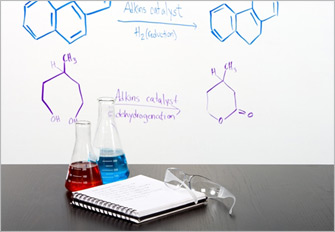About Chlorhexidine: Applications
Benefits and Uses of Chlorhexidine
Chlorhexidine has been used in more than 60 different pharmaceuticals and medical devices. Its wide application is due to its broad-spectrum efficacy, safety-profile and substantivity on the skin with low irritation.1,10 It has been found to possess a high level of antimicrobial activity and strong affinity for binding to skin and mucous membranes.6,11,26 At product-dependent concentrations, chlorhexidine is widely used as a disinfectant in a range of healthcare products, including topical skin disinfectants, wound and burn care products, oral care products, hand washing solutions, urology catheter lubricants, central venous catheters and needleless IV connectors.

Skin Care
Chlorhexidine-saturated cloths have demonstrated a greater reduction in Vancomycin-Resistant Enterococci (VRE) when compared to soap and water. The saturated cloth resulted in a 2.5 log10 reduction of VRE on patients' skin; the incidents of VRE were reduced from 26 colonizations per 1,000 patient-days to 9 per 1,000 patient-days; as well as a significant reduction of VRE on healthcare workers' hands.11
Topical creams containing chlorhexidine are used to prevent the spread of infection on the skin's surface. Cloths with a 2% chlorhexidine gluconate have also showed a 50% reduction in Surgical Site Infections (SSIs).23
Patient Preoperative Scrub and Showers
Preoperative skin preparation with chlorhexidine helped to reduce surgical wound infections by reducing the normal skin flora. A combination of chlorhexidine and alcohol showed the greatest reduction in bacteria, lasting up to 24 hours.12 In one study, chlorhexidine gluconate was shown to have a greater skin flora reduction than povidone-iodine. The use of preoperative chlorhexidine antiseptic has been shown to reduce bacterial colonization nine fold.22
Oral Care
For oral care, chlorhexidine has been called the gold standard among antiplaque and antigingivitis agents.26 Many forms of oral care products exist: mouthwashes, gargles, toothpastes, aerosols, gels and varnishes5. These products help prevent plaque, treat sore gums and ulcers, kill oral bacteria and treat gingivitis. Chlorhexidine binds to the oral mucosa and tooth surfaces to prevent plaque formation and maintains bacteriostatic action for several hours.
Urology
Chlorhexidine is a beneficial part of a comprehensive protocol for urinary catheters. A reduction in urinary tract infections during prolonged use of urinary catheters has been shown when using a 0.005% chlorhexidine concentrate for bladder irrigation.12
Hand Hygiene
Hand hygiene is the single most effective infection prevention measure. Chlorhexidine solutions are often used for hand hygiene in the hospital setting. Alcohol preparations may have the quickest kill rate against bacteria, but chlorhexidine has a much longer duration of action.12 Products with chlorhexidine in combination with alcohol have been shown to be more effective than alcohol alone.21 Hand washing with chlorhexidine solutions have been shown to reduce skin flora by 86% - 92%. As a surgical scrub, chlorhexidine not only reduced skin flora, but it also maintained its antimicrobial activity for up to six hours.13
Use with Pets
Chlorhexidine is also available in many pet products such as shampoos and pet treats. These products keep pets and animals clean and smelling pleasant.
Vascular Access
The Centers for Disease Control and Prevention (CDC) published Guidelines for the Prevention of Intravascular Catheter-Related Infections in 2011. Products with chlorhexidine, such as central venous catheters, skin preparation solutions and insertion site dressings are recommended as interventions that may prevent Central Line-Associated Bloodstream Infections (CLABSIs) based on clinical evidence.20
Vascular Access Catheters
Chlorhexidine-impregnated vascular access catheters are used to provide protection against CLABSIs.
Central Venous Catheters (CVC)
The first generation of the chlorhexidine-impregnated catheters was treated with chlorhexidine on the external surface only. These catheters have shown a reduction in the incidence of catheter-related bacteremia by 79%.16 In addition, studies have shown a potential cost savings of over $60,000 for every 300 catheters used.9,16 The second generation of chlorhexidine catheter is impregnated intraluminally and extraluminally, further protecting against microbial colonization.
Peripherally Inserted Central
Venous Catheter (PICC)
A third generation chlorhexidine PICC has demonstrated 99.99% effectiveness, in vitro, against bacterial and fungal colonization. This has been proven to last at least 30 days.17 In addition to its antimicrobial properties, the chlorhexidine PICC has also been cleared to market as the first antithrombogenic/antimicrobial catheter. It has been shown to reduce thrombus accumulation on the catheter surface by 61%, without the presence of infection, and by 92% in the presence of infection compared to control catheter, data on file.17 The antithrombogenic affect has also been shown to last for at least 30 days.17
Vascular Access Site Dressings
Chlorhexidine dressings are used at the time of insertion as with subsequent dressing changes to prevent infection at the insertion site. There are different dressing products on the market that incorporate chlorhexidine, most notably a chlorhexidine sponge dressing and a chlorhexidine gel pad. The chlorhexidine sponge dressing has shown a reduction of 60% in the incidence of CRBSI and a reduction of 44% in local site infections.9,15
Skin Preparation Solutions
A combination of alcohol and chlorhexidine skin preparation is the standard of care in vascular access. A meta-analysis of 4,143 vascular catheterizations using chlorhexidine/alcohol showed a 50% risk reduction for CLABSI when compared to povidone-iodine.12 The chlorhexidine/alcohol solution is superior due to its quick kill, long duration of action and ability to work in the presence of blood and bodily fluids. All current standards and guidelines recommend the use of chlorhexidine/alcohol solution as a primary infection prevention strategy for CLABSI.12
Needleless IV Connectors
The first chlorhexidine and silver impregnated needleless IV connectors were released to the market in 2010. in vitro testing has shown that the product obtained a 7 log reduction in bacterial and fungal colonization and remains active for 7 days, which is more effective than needleless IV connectors with silver technology in vitro.27

